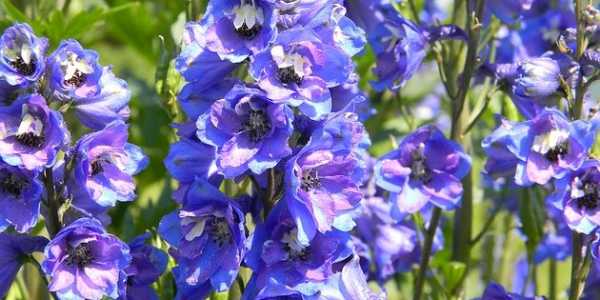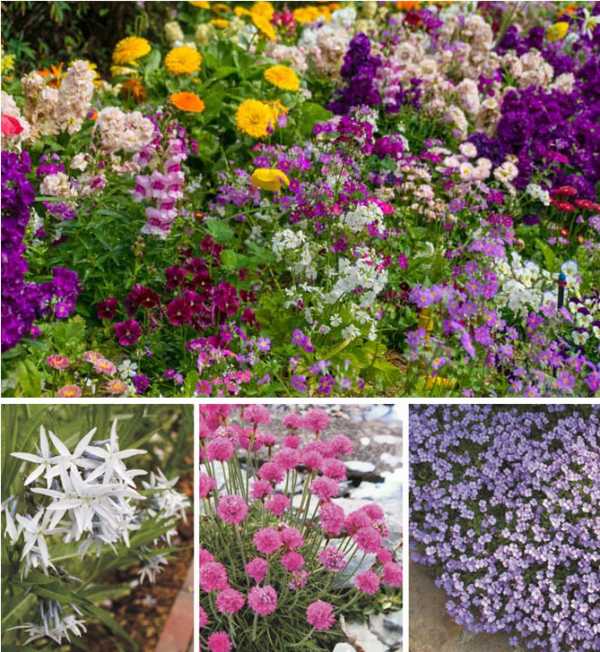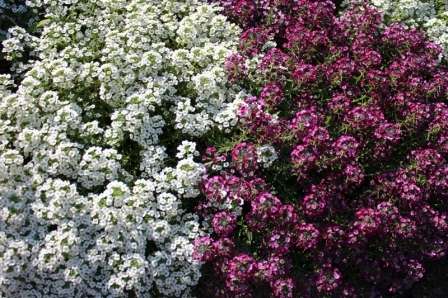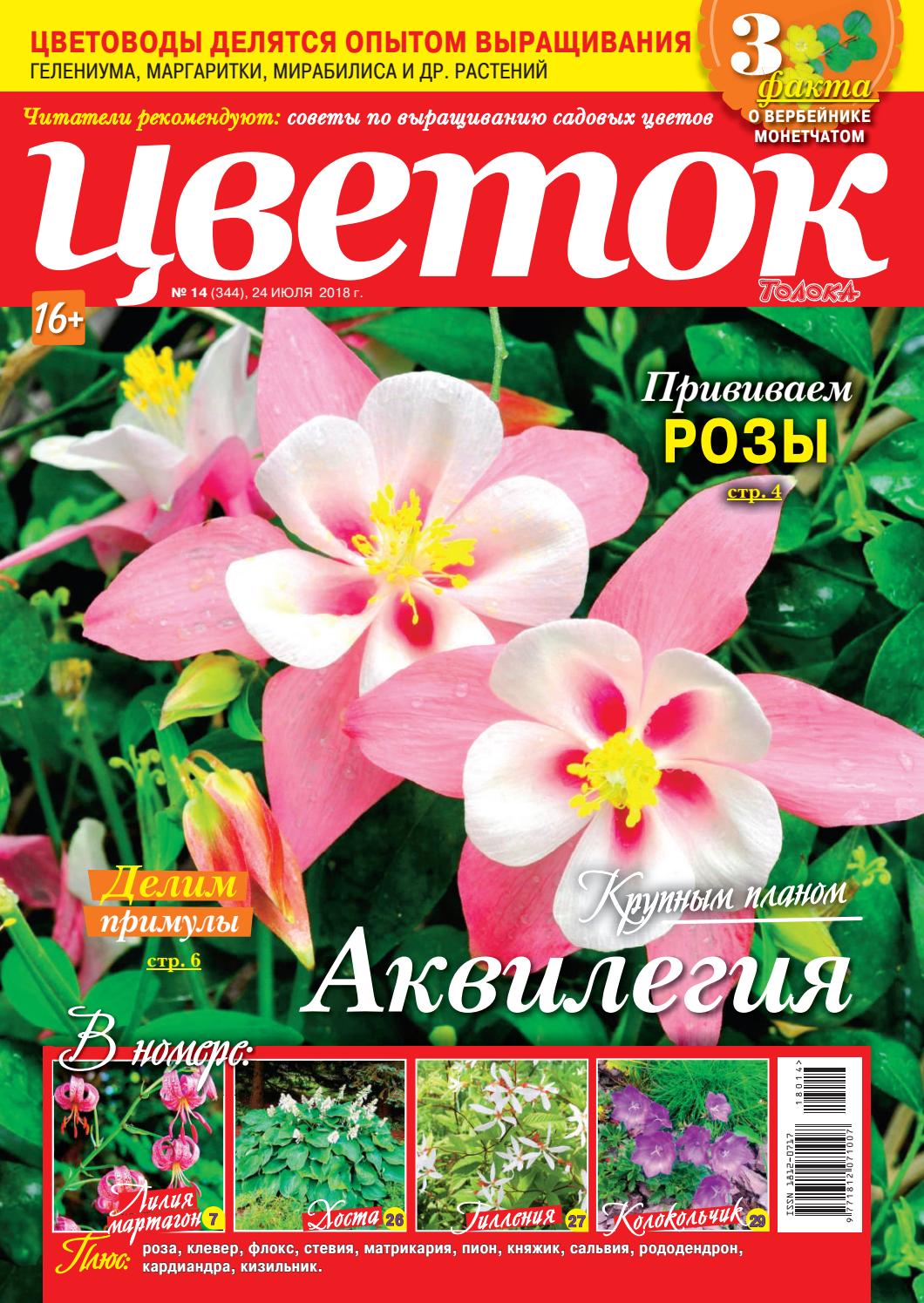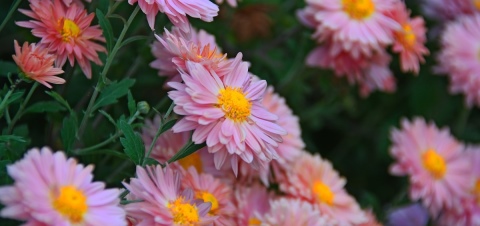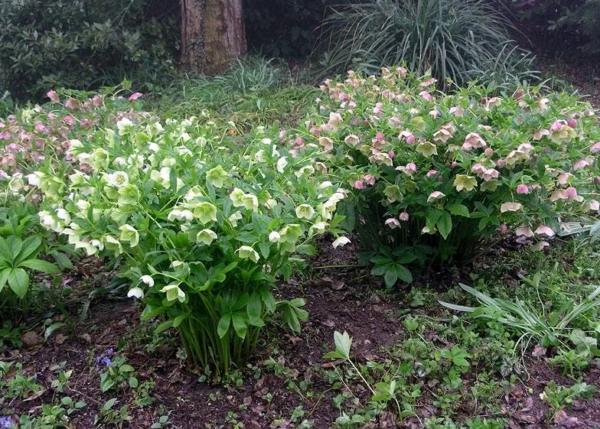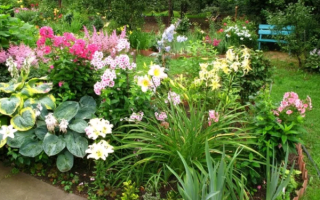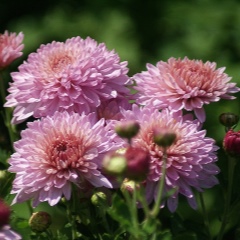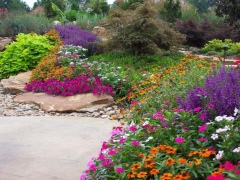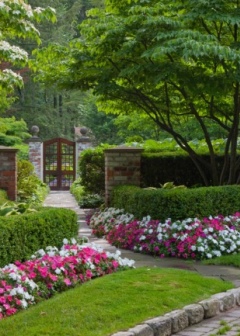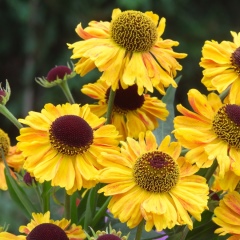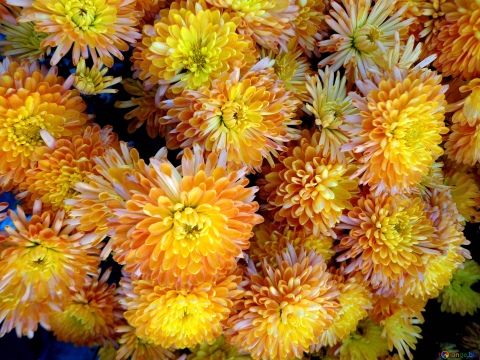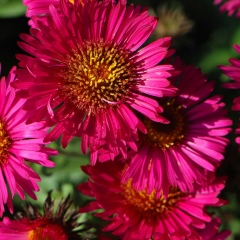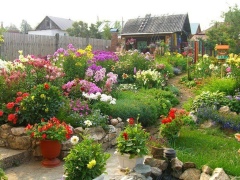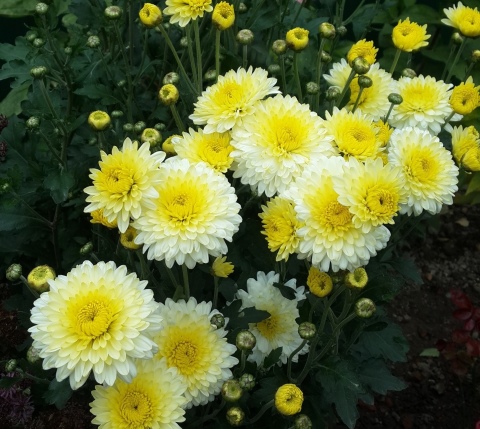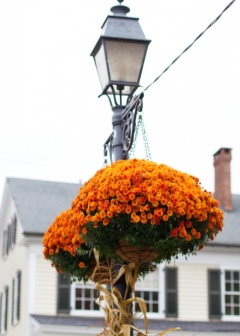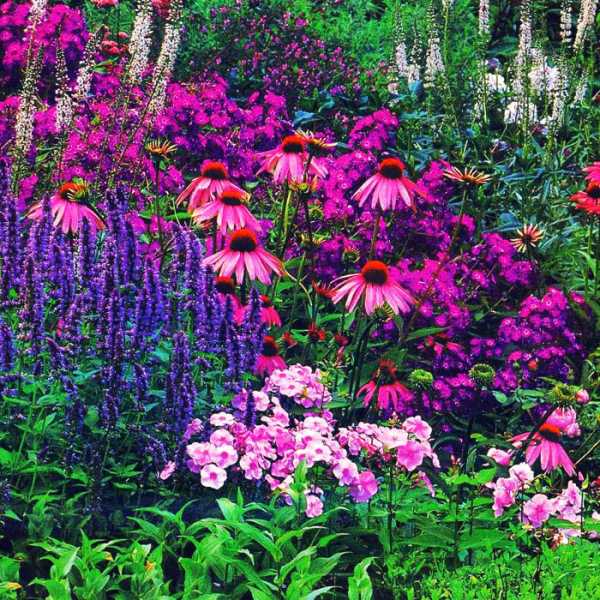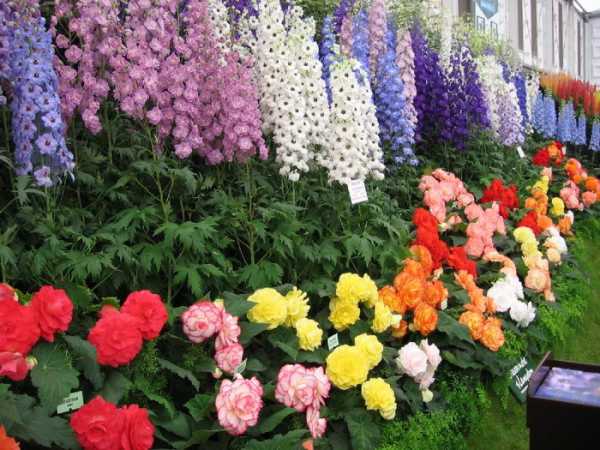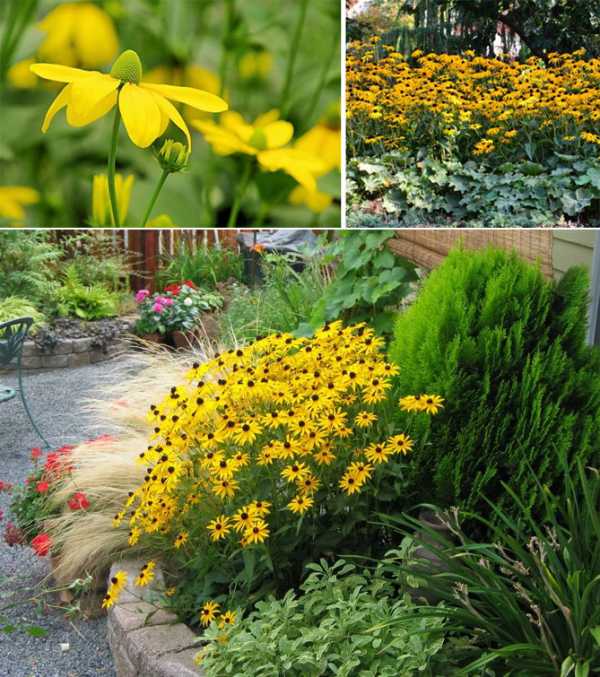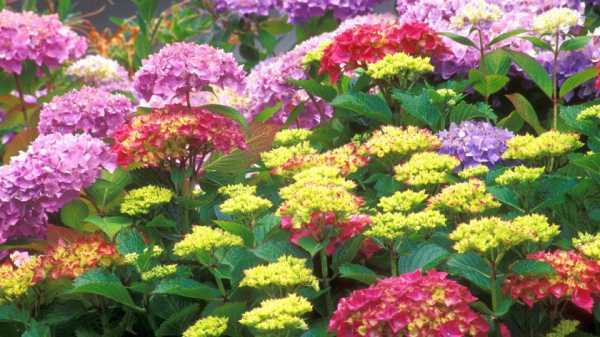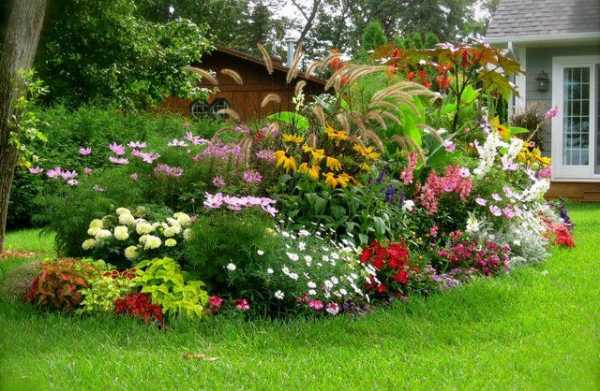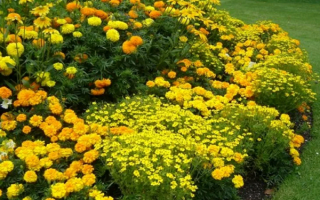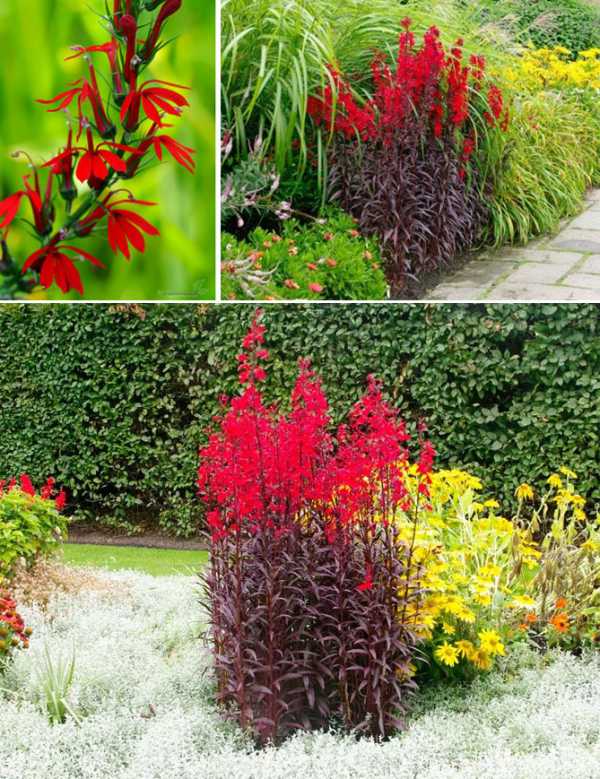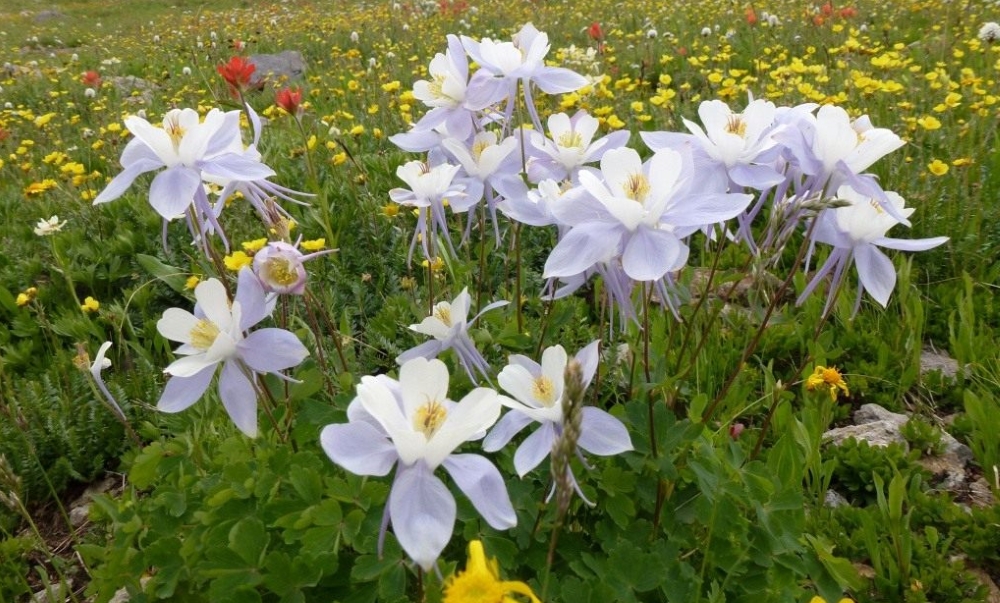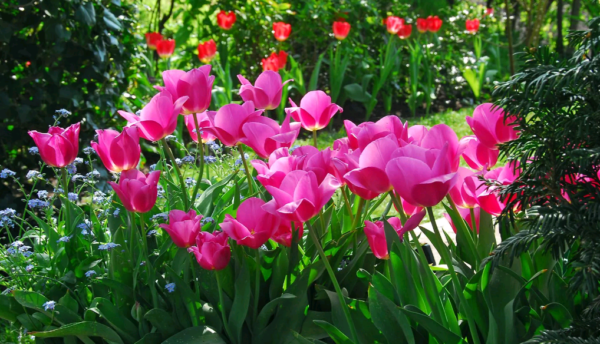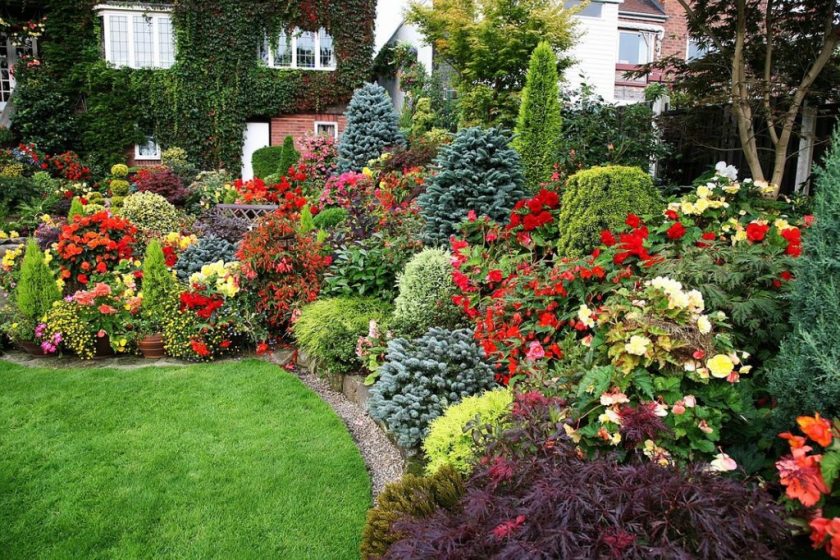Gladioli
Gladioli will look very beautiful in the garden. Be sure to decorate the flowerbed with them. Active blooming of gladioli will begin in the second half of summer.
It is better to plant bulbs of the same size in one area. If we take different planting material - mature bulbs and "baby", then the former will oppress small shoots.
When planting, it is necessary to process the bulbs with a solution of potassium permanganate: 0.5 g of potassium permanganate per 1 liter of water. Planting material should be placed in this mixture for 30 minutes and then planted immediately.
A sunny, ventilated place is chosen for landing. The sowing depth in light soils is 15 cm, in heavy soils - 10 cm. Sand must be added to the bottom of the planting furrow. Additionally, you can use humus and compost. Watering should be done every other day.
When the bulb sprouts, you can mulch the area with humus or dry small grass - this will prevent the soil from drying out and will be an additional source of fertilizer.
Watering gladioli during the growing season and flowering is desirable every 3-4 days, depending on the climate. A peduncle garter is required, since the plant grows up to a meter. After flowering, from September to October, gladiolus tubers are dug up.
The planting material is sorted: the ripe bulb is taken from the “babies” and stored until spring in a cool (from +5 to -10) room, basement or refrigerator. For better preservation, a clove of garlic is placed in a container with tubers, and in the spring all tubers are checked and whole tubers are selected for planting.
Clematis
This is the most popular variety of flowering lianas. Initially, they were not adapted for wintering in the middle lane, but breeders bred frost-resistant and hardy varieties. The most popular planting method is now deepening the center of tillering 15 cm below ground level. Another little trick of experienced clematis owners is planting flowers along the walls of houses or fences.
Frost is a reliable ally of clematis and protects it from pests, and also contributes to the development of a deep dormancy phase in the plant. Do not rush to prune clematis, especially the tops of the shoots and leaves - nutrients leave them gradually, and only when the ambient temperature approaches 0 ° C, the plant can be shortened.

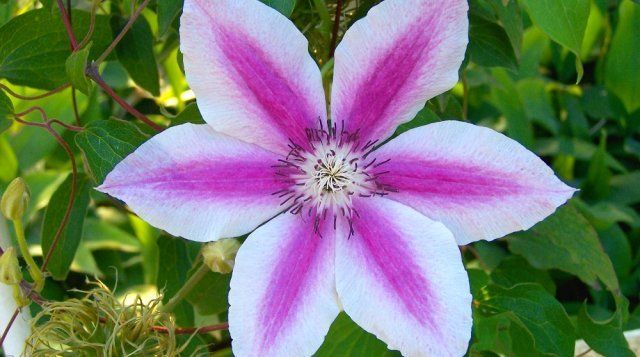
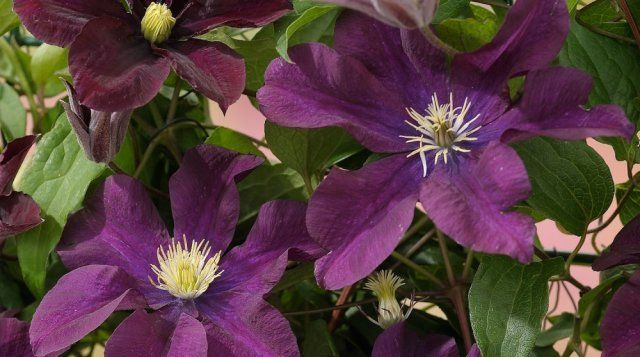
Turkish carnation
The elusive aroma and bright inflorescences of this plant attract the attention of more and more summer residents every year. At the same time, the "southern guest" is very resistant to cold weather, it can be planted in early spring and admire the flowering until late autumn
Keep in mind that the Turkish carnation greedily absorbs sunlight, so you can choose the appropriate place for planting it.
Although it is a perennial, experienced flower growers prefer to renew the plants every two years to resume flowering. No special conditions for growing Turkish carnations are required, it is enough just to apply complex fertilizers and, with the onset of spring, rake snow from the plantings so that the bushes do not get wet and do not melt.
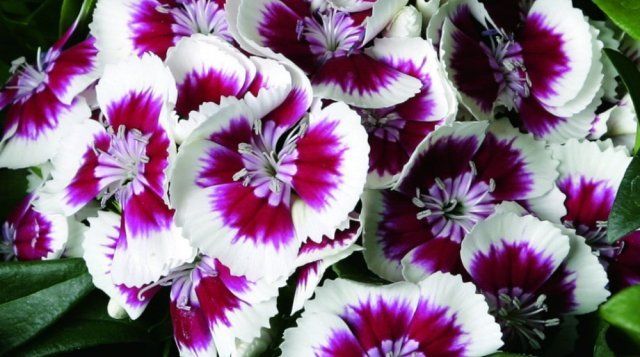
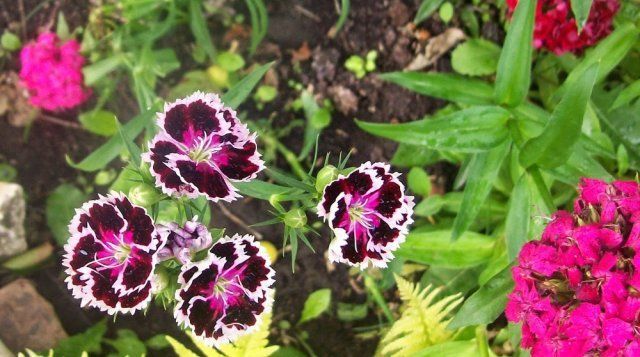

general information
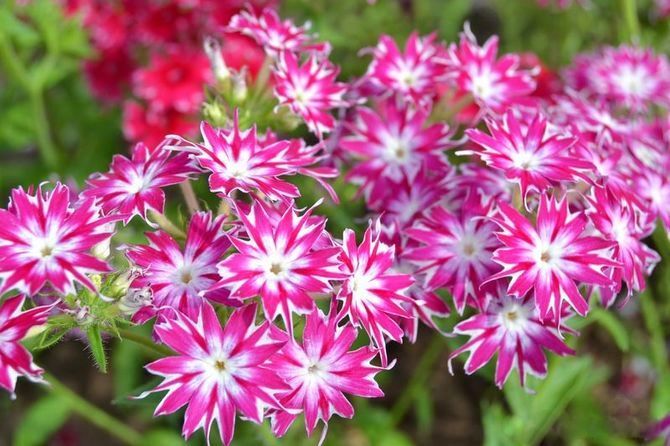
The main biological feature of perennials is the ability to winter outdoors. They annually renew and continue the development cycle: growth → flowering → fruiting. This is made possible by individual organs that have adapted to the cold season. Most often underground: roots, rhizomes, tubers, bulbs. Some ornamental perennial plants lose their aerial part in winter, and life is preserved only in tubers and bulbs. In others, shoots remain, but all biochemical processes seem to slow down, freeze (like in trees).
Despite the fact that all garden perennial flowers are frost-hardy, they persistently endure low temperatures without any shelter in the middle zone of the European part of Russia and even north of it, some of them require special care during the cold period. It is advisable to cover them with spruce branches or foliage:
- anemones;
- hyacinths;
- delphiniums;
- clematis;
- lilies;
- buttercups;
- peonies;
- roses;
- chrysanthemums.
However, it must be borne in mind that first-year plants and those that are already completing their life cycle lose this ability, and they should be covered. Also, amateur flower growers should know that temperature changes are destructive for them, which provoke stagnation of surface water. Therefore, they should initially be planted in the garden in well-drained areas.
Perennials are good for decorating a garden that does not always have enough time to care for. For the most part, they are unpretentious and require human attention only a couple of times a month - in contrast to annuals, with which you have to constantly tinker with.
To choose the right perennials, you need to take into account many factors: the time of sowing and planting in the ground; the place where the flower bed will be located (shady side or sunny); type of soil, flowering period and many other important nuances.
Pion
Blooming handsome peony is always associated with holidays and the beginning of the best time of the year - summer. In tree-like peonies, in October, shoots are tied and the trunks are mulched with peat, and with the onset of cold weather, the bushes are covered with spunbond, burlap or spruce branches. Herbaceous peonies do not need shelter. With the onset of autumn, it is enough to cut off old shoots to ground level, and spud the buds of renewal with peat or compost. If late or recurrent frosts are expected, then young specimens can be covered with spruce branches or dry foliage.
It is best to plant peonies in neutral or alkaline soils (loam or clay). The plant must be protected from strong winds and an open, sunny place must be chosen for it. The main fertilizers for peonies Is dung and mullein.

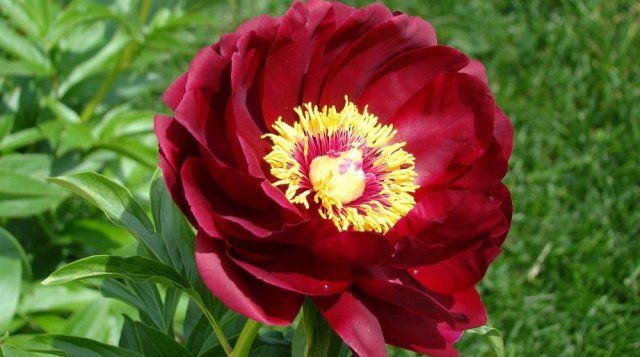
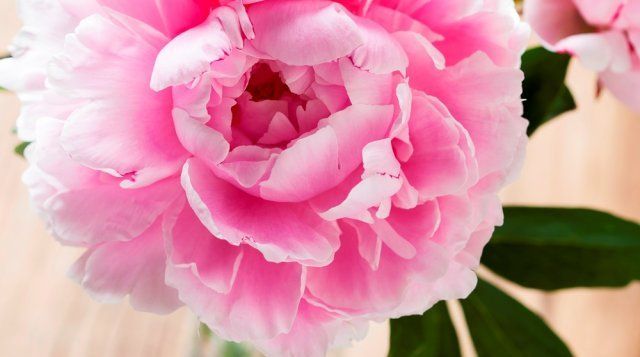
What are peonies: we understand the classification
Peonies are different: tree and herbaceous, double and non-double, early and late. Why do you need to know this?
Perennial flowers to decorate the landscape
Perennial plants have different heights: undersized, medium-sized and tall, in addition, there are also climbing ones. If you correctly take into account and use the height of each type, instead of a flower bed, you can get a real work of art.
Stunted perennial flowers
Among the undersized flowers, phlox stand out for their bright colors and attractive appearance. These are suitable garden flowers for Siberia, due to their frost resistance. A large number of these flowers form a dense carpet that beautifully surrounds the flowers above. Photo:
The sweet and tender gentian is found in gardens throughout the summer. Its petals are both deep blue and pale blue. The gentian flower looks like a charming little bell. Photo:
A scattering of Arabis flowers colors any garden. The flowers of this plant are white, pale pink, crimson and even purple. Photo:
Perennial medium-sized flowers
Daylily flowers look like a lily (even the names of these flowers are similar) and have a huge variety of colors. Daylily tolerates both cold and heat well, grows best in areas open to the sun. Photo:
Poppy is a good example of how absolute unpretentiousness and rare beauty are combined. Poppy flowers fascinate with airy petals and various colors. An example in the photo.
Small garden unpretentious flowers also fascinate with their modesty and tenderness. An example of this is gypsophila and yarrow, which bloom all summer and delight the eye with their simple beauty. Even in the photo you can see what a beautiful flower it is.
Also pay attention to the flowers of astilba and asters.
Perennial tall flowers
Tall plants include magnificent roses. It makes no sense to describe this flower, it is known and loved all over the world. Photo:
The flowers of tall stock roses amaze the eye with a variety of shades of pink, but there are specimens with white or dark purple flowers that appear almost black in the photo.
The tall foxglove stems with small multi-colored buds will always attract the attention of visitors. Photo:
Sunflowers will look very cozy and even a little colorful in the garden.
A shady garden and a choice of plants for it
The presence or absence of sunlight in the garden is a key factor in choosing the types of plants that will decorate it. Most people mistakenly believe that if the garden is shady, then it is no longer possible to plant any flowering plants in it, since they will certainly die. But this assumption is not true, since there are plants (including flowering ones) for which the presence of a shade is a favorable condition for healthy development and high-quality growth. Moreover, these plants can be both annual and perennial, be both short and shrubs. In a word, the choice of annual and perennial unpretentious and shade-loving plants for the garden is quite large.
In addition to shade tolerance, when choosing the type of plant that will be planted in the garden, you should also take into account its specifics. For example, crops such as laurel or privet are not recommended to be planted in gardens as no other flowers will grow next to them. This is explained by the release of special substances by them, which inhibit the growth of everything that is around them.
Another important point that every gardener should know is that almost all shade-loving garden flowers prefer moisture, but at the same time, water should not form puddles in the soil. Therefore, it is recommended that the soil in the garden is always moist and well-drained.
The rest of the article provides information on the main shade-loving plants for the garden, as well as some ideas for using them to decorate it.
Phlox
These unpretentious perennials can decorate any flower garden. Among the rich variety of phlox species, you can easily choose the variety you like. Unpretentious beauties have proven themselves well in design continuous flowering beds, mixborders and alpine slides. Just the case when you will not get off with planting a couple of copies - phloxes look most effective in bulk.
This ornamental culture is undemanding to soils, but it feels best in areas with loose and moist soil. In the harsh climate of Siberia and the Urals, with its cold, but little snowy winters, it is better to plant phloxes in areas that are lighted and protected from the wind. In winter, plants are covered with peat, foliage or non-woven fabric.
Popular types and varieties of perennial phlox
5 types and 21 varieties of phlox for every taste.
Frost-resistant flowers annuals
Frost-resistant annuals are a large group of plants, which include decorative and deciduous species. Below are some more frost-resistant flowers for your garden, which will delight you with their presence until late autumn.
NIGELLA, GIRL-IN-GREEN - NIGELLA
-
Flowering time:
June August -
Location:
sunny or slightly shady -
Reproduction:
sowing seeds in autumn
Blue flowers have been cultivated for generations, but multi-colored mixtures are now more popular. An easy-to-grow flower bed plant, but its flowering period is short. Nigella damaska (N. damascena), 45 cm high, is the main species and 'Miss Jekyll' is a favorite blue variety. 'Persian Jewels' is a blend.
MAK - PAPAVER
-
Flowering time:
June - September -
Location:
sunny or slightly shady -
Reproduction:
sowing seeds in April
Much more graceful than their curb cousins - buds bow their heads, petals flutter in the wind, and flowers are short-lived. Despite the delicate appearance, they are tough and do not need to be tied up. Poppy self-seeding (P. rhoeas) with a height of 60-90 cm is popular. Poppy for sleeping pills (P. somniferum) has double flowers.
VIOLA, ANUTINA EYES - VIOLA
-
Flowering time:
depends on the sowing time -
Location:
sunny or slightly shady
Low-growing flowers with a flat corolla. Early spring varieties are grown as biennials (sown under glass in June), summer and autumn-flowering varieties are grown as annuals (sown under glass in March). The difference in height between the varieties is insignificant, but the range of colors is very large.
VIOLA, VIOLA - VIOLA
-
Flowering time:
depends on the sowing time -
Location:
sunny or slightly shady
More durable, more compact, less easy to grow and with smaller flowers. Can be grown as annuals or biennials - see pansies. New additions include 'Bambini' with cat-mustache-like lines and color-changing 'Yesterday, Today and Tomorrow'.
A rare suburban area does without oases of flower beds. Do-it-yourself decorative corners bring soulfulness and coziness to everyday summer cottage chores.
The favorite plant of gardeners is decorative perennials.
Every spring, they make their way out of the ground, and are the first to bloom, diluting the whiteness of unmelted snow with juicy inflorescences.
Among the variety of perennial flowers, unpretentious plants wintering in the open field stand apart. They do not need to be dug out before frost: the aboveground part of the flowers dies off, and the roots and bulbs go into a state of dormancy until spring.
By type, perennials are divided into bulbous, rhizome and corms.
Bulbous:
- ... Beautiful garden flowers of various colors. The calyx of the flower has a smooth or double structure. Bulbs planted in autumn wake up very early in spring.
- ... Fragrant spring flowers. Already in April they are ready to delight with a riot of colors. They love sunny places and light, loose soil.
- ... Very hardy bushy perennial. Can hibernate without shelter.
Rhizome:
- ... They are subdivided into bush and ground cover. High varieties love fertile land and sun, undersized ones are less whimsical. They bloom long and luxuriantly, starting in mid-spring.
- Irises. Decorative, fragrant, unpretentious plants in care. They bloom in May and June. Mostly blue, all kinds of shades, up to purple. There are yellow varieties.
- Roses. In the catalogs of nurseries there are both own-rooted plants and varieties grafted onto wild rose hips. Selection has led to the emergence of an unthinkable number of colors and shades of this plant.
It's important to know:
in Siberia and the Far East, the rose needs careful shelter for the winter. Corms:
Corms:
- By the shape of the flower, double, simple, folded, dissected species of gladioli are distinguished, many of which are constant companions of personal plots.
- Crocuses. They bloom as soon as the snow melts. They have yellow, blue, lilac, white, as well as bicolor inflorescences, similar to a funnel.
- Crocosmia. Lancets of long leaves are up to half a meter. The stems are crowned with bell-shaped flowers of warm shades - yellow, orange, orange-scarlet. Grow well on loose, fertilized soils.

